Little
Papillio Domus
Butterfly House
Fort Mill, South Carolina
Project Type
Healthcare Facilities
Size
24,000 Square Feet
Design Services
Architecture, Engineering, Interior Architecture, Sustainability
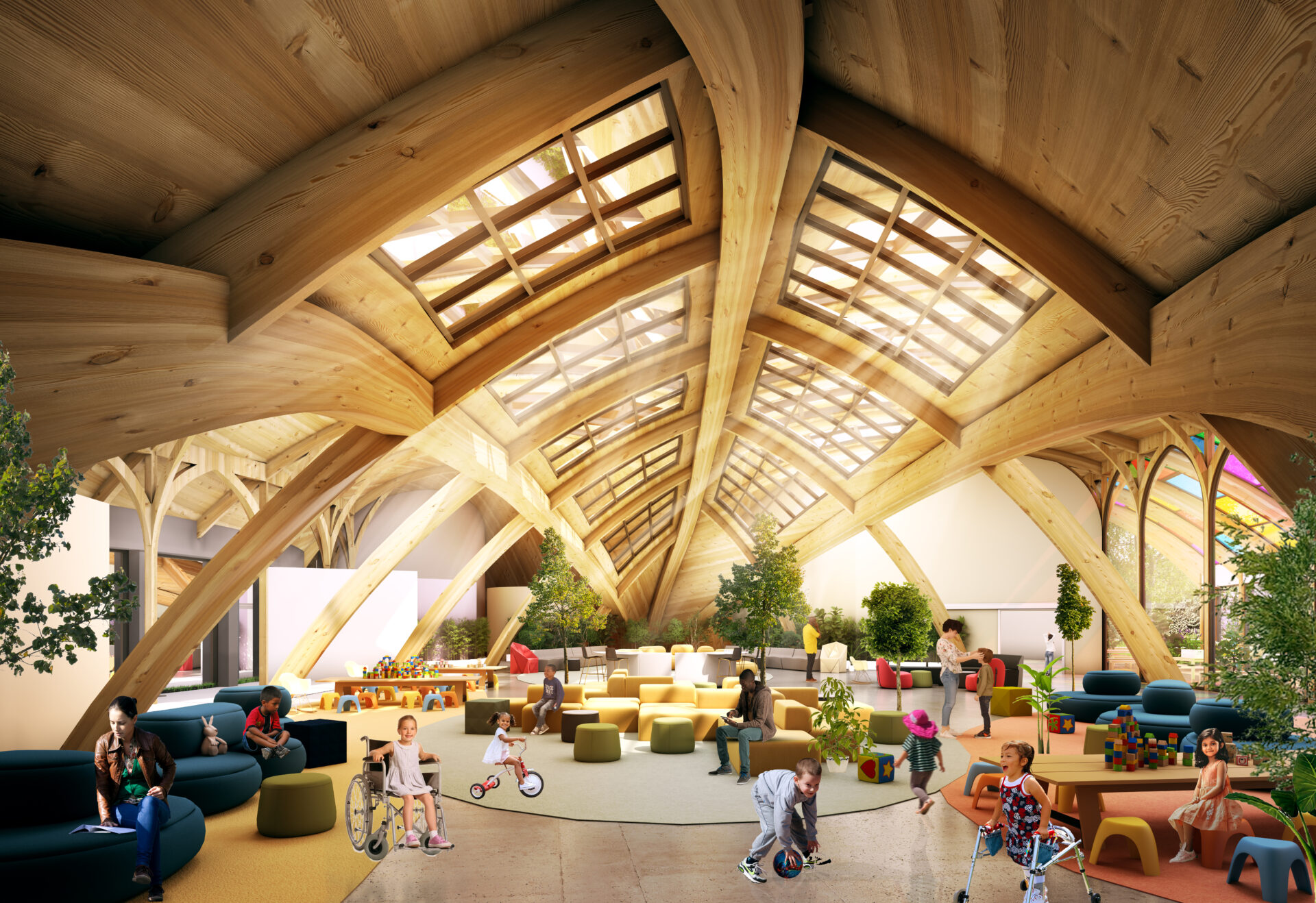
Papillio Domus (Butterfly House) is an innovative children's hospice design concept intended to transform pediatric hospice care in the United States, addressing the critical shortage of specialized facilities.
This groundbreaking outpatient facility serves approximately 15 children aged 7-12, offering access to pediatric hospice staff, therapy spaces, and amenities for family togetherness and celebration of life. The building features two wings that intersect at a central gathering space: the north wing includes treatment and therapy rooms, bereavement rooms, and a multi-faith chapel, while the south wing focuses on play and socialization with a game room, dining room, library, and semi-enclosed butterfly garden.
Design Awards
- Fast Company’s 2024 World Changing Ideas, Finalist
- Buildner Children’s Hospice Competition, Honorable Mention
- Healthcare Environment Awards, Winner – Conceptual Design
Project Goals
This design concept aims to showcase a unique children’s hospice facility that provides an alternative to hospital or home care. It focuses on comfort and sustainability with proximity to nature and essential services.
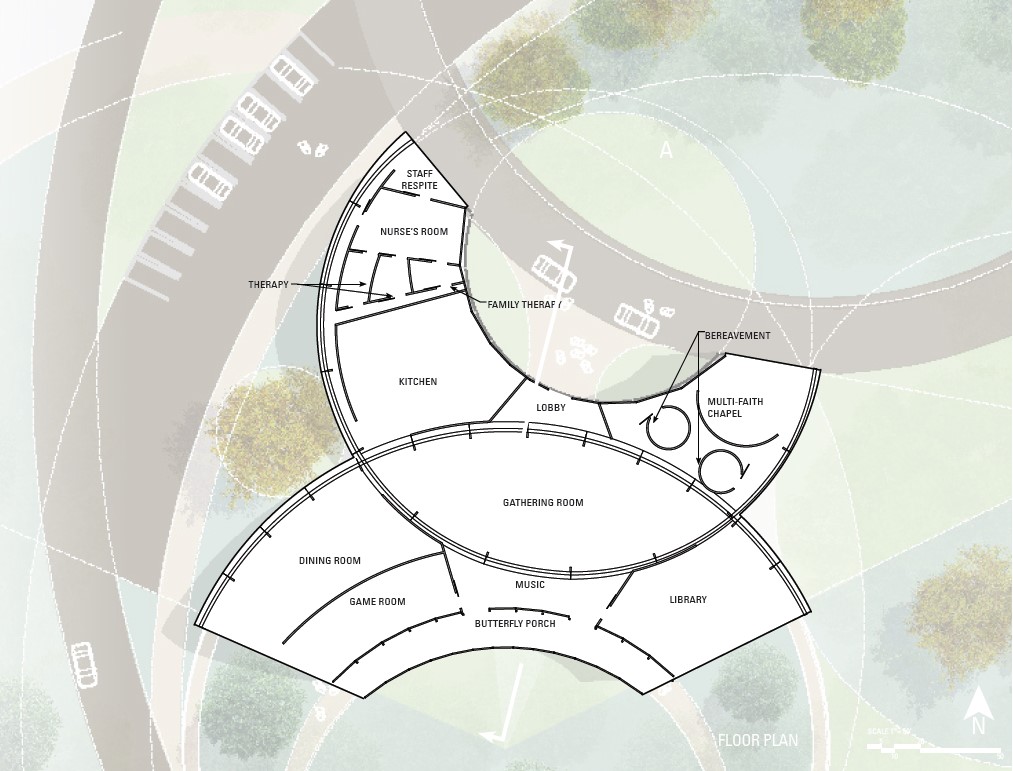
Solutions
This groundbreaking pediatric hospice facility combines unique design, comprehensive care, sustainability, strategic site selection, and healthcare professional training, making it a pioneering design concept with far-reaching impacts.
DESIGN OBJECTIVES
- Address the critical need for pediatric hospice facilities by creating a space that offers a comprehensive approach to care while being revered for its warmth and welcoming atmosphere.
- Ensure thoughtfully researched site selection, prioritizing accessibility to essential services and natural amenities that enhance the well-being of pediatric hospice patients.
- Work closely with regenerative design experts to incorporate sustainability elements in the building and site design.
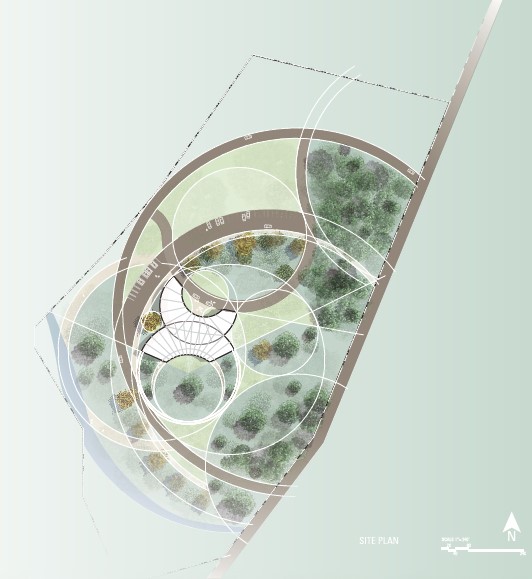
Unique Design Philosophy
Designed as more than a functional healthcare facility, Papillio Domus instills hope and joy in young patients and their families.
The project’s design, inspired by butterflies, is not only aesthetically beautiful but also emotionally uplifting. Butterflies tend to represent transformation, hope, and rebirth due to their cycle of metamorphosis, and thus became an apt inspiration for the building’s form. The stained-glass roof of this porch space emulates the transparency and color of butterfly wings, while the flowering plants in the garden beyond are intended to attract butterflies. This porch serves as a sun space, reducing energy usage by keeping the temperature of the building consistent throughout the day and seasons.
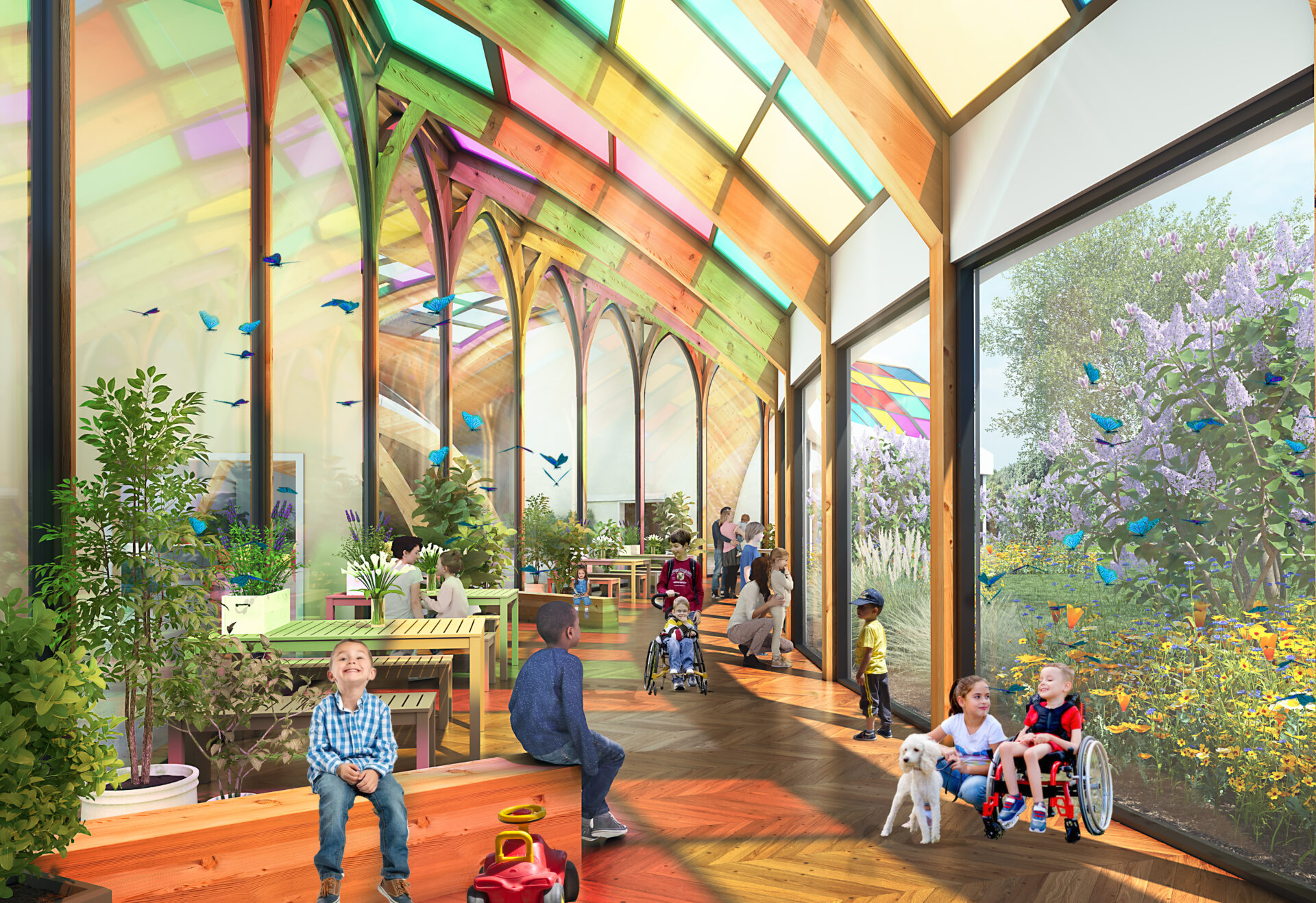
SITE SELECTION GUIDED BY GLOBAL RESEARCH
Thoughtful site selection was a critical part of the design process.
Extensive research on children’s hospice facilities worldwide revealed a significant disparity: the United Kingdom has 40 facilities compared to only three in the United States—with none in the Southeast. This led to the site selection in South Carolina, ensuring the facility is close to hospitals, airports, and amenities preferred by children’s hospice patients, such as nature, animals, and ice cream.
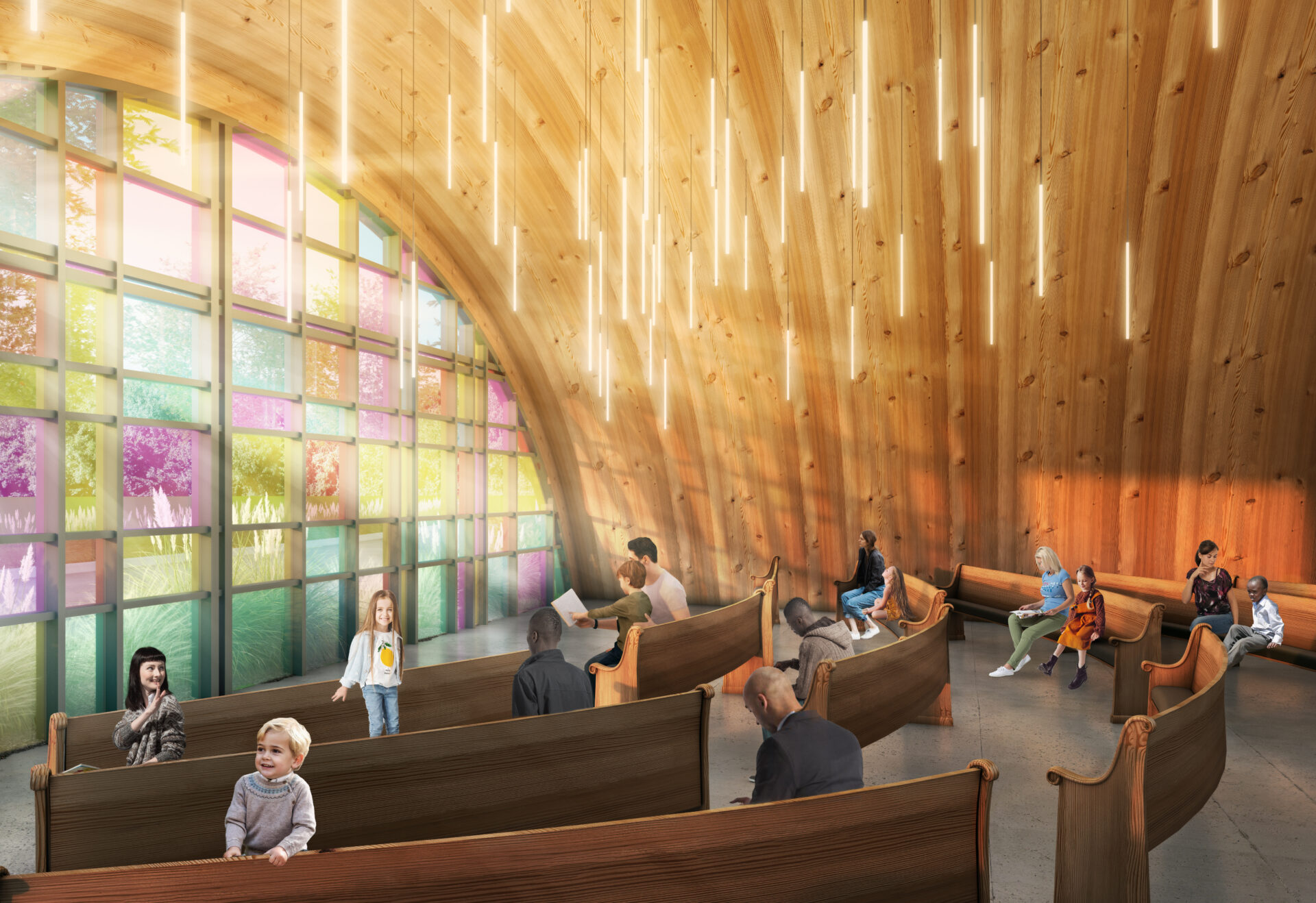
SUSTAINABILITY
The project highlights sustainable design elements, showcasing a forward-thinking commitment to responsible resource use and environmental stewardship.
The design’s emphasis on sustainability, with features like mass timber and passive heating and cooling, exemplifies innovation with the potential to inspire other healthcare facilities and set new standards in healthcare architecture. This design could lead to a significant reduction in the environmental impact of healthcare facilities across the board.

RESULTS
Papillio Domus represents an innovative design concept that has the potential to completely transform pediatric hospice care.
The design itself has generated considerable attention and is already inspiring discussions and awareness about the need for specialized pediatric hospice facilities. Sparking conversations about the urgent need for such facilities, it serves as a catalyst for awareness, highlighting the gaps in pediatric hospice care and the importance of addressing the unique needs of young patients and their families.


